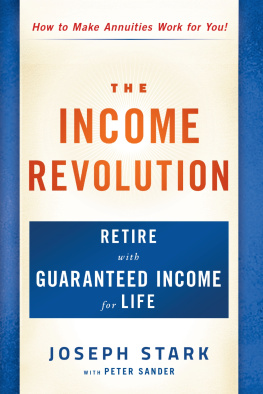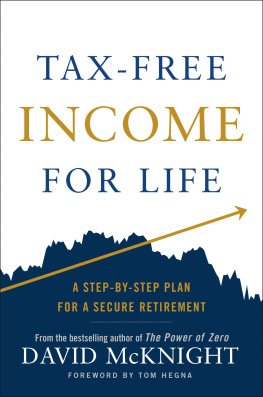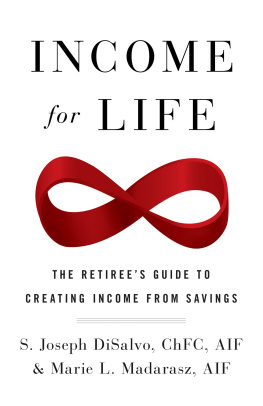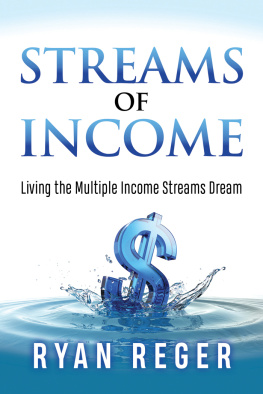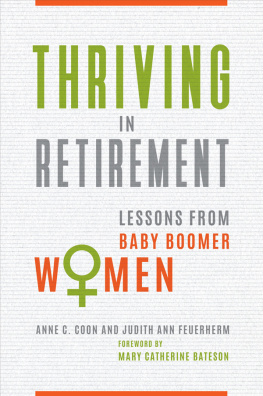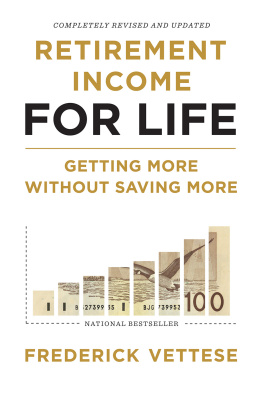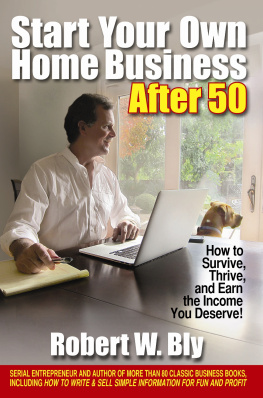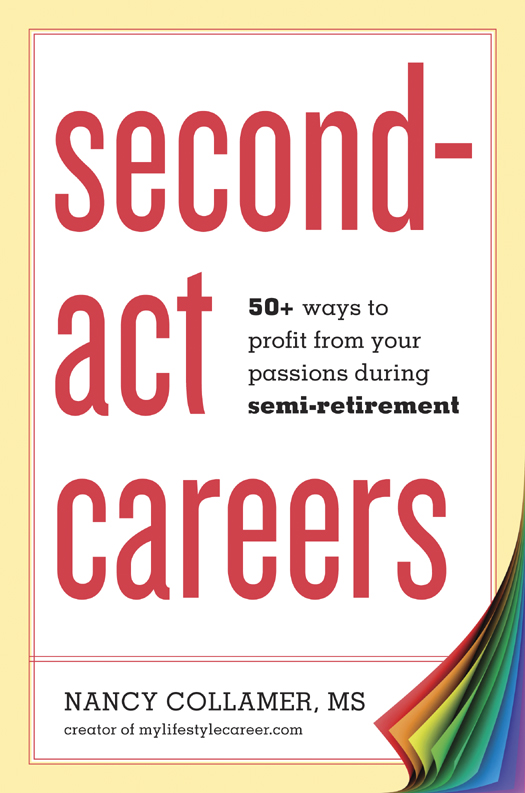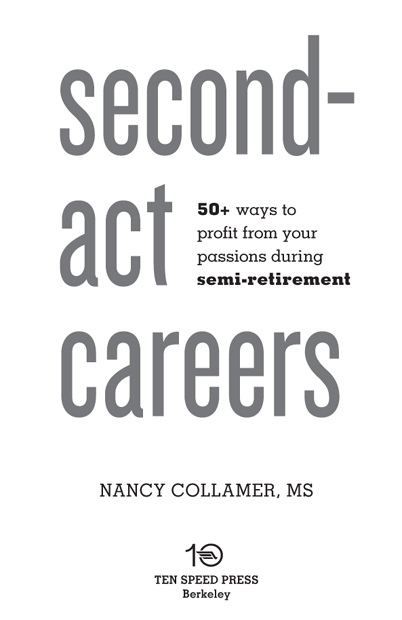Copyright 2013 by Nancy Collamer
All rights reserved.
Published in the United States by Ten Speed Press, an imprint of the Crown Publishing Group, a division of Random House, Inc., New York.
www.crownpublishing.com
www.tenspeed.com
Ten Speed Press and the Ten Speed Press colophon are registered trademarks of Random House, Inc.
Library of Congress Cataloging-in-Publication Data
Collamer, Nancy, 1957
Second-act careers : 50+ ways to profit from your passions during semi-retirement / Nancy Collamer.1st ed.
p. cm.
1. Career changes. 2. RetireesEmployment. I. Title.
HF5384.C65 2013
650.1408696dc23
eISBN: 978-1-60774-383-5
Cover design by Katy Brown
Interior design by Colleen Cain
v3.1
Contents
PART ONE
50+ WAYS TO GENERATE INCOME IN SEMI-RETIREMENT

PART TWO
CREATING YOUR SECOND-ACT CAREER

Acknowledgments
This book would never have happened without the encouragement of my wonderful literary agent, Marilyn Allen. Marilyn, thank you for your friendship and belief in the importance of this book. I am so thrilled that we finally got the chance to work together! To the team at Ten Speed Pressin particular my editor, Sara Golskithank you for your warm welcome, savvy advice, and editorial assistance. I am truly honored to be part of the Ten Speed family.
One of the aspects I enjoy most about my job is that I get to work in a profession filled with warm, smart, and supportive colleaguesand a few deserve special mention. To my lunch bunchKaren Kirchner, Susan Gannon, and Linsey Levinethank you for more than a decade of support, brainstorming, and wonderful holiday luncheons. Linsey, it was indeed serendipitous that we earned our masters degrees at the same time; you have been my personal career counsel on more occasions than I care to admit. To Susan Joyce of Job-hunt.org, thanks for showcasing me on your site; and to my accountability buddies, Shannon White and Pat Katepoo, much mahalo for keeping me focused, on track, and productiveat least most of the time!
To the best clients in the world, thank you for allowing me to be part of your journey; you have inspired me with your brilliance and honored me with your trust. This book would never have been possible without you. And to all the remarkable people who agreed to be interviewed for this book, thank you for being so generous with your time, insights, and willingness to share your personal stories.
Much gratitude is also due to all my friends, gym buddies, UNC pals, Shir Ami supporters, and neighbors who have taken such great interest in this project. Your enthusiasm and How are you holding up? phone calls kept me going day after day.
A very special thank-you to my brother, David Jarmul, and his wife, Champa, for your brainstorming help and advice; and to my sister, Ruth Jarmul, and her husband, Irv Rosenthal, for your unfailing encouragement, love, and support. I am truly blessed to have such wonderful siblings. My one regret in writing this book is that our parents, Seymour and Lore Jarmul, are not alive to see this book in print. I was raised in a family of authors, and I know they would have been delighted to know I have joined their ranks. Thank you Mom and Dad for everythingI truly could not have asked for better role models.
To my two delightful daughters, Danielle and Juliana, who encouraged and cheered me every step of this journey, thank you for making me one proud Nin. You enrich my life beyond measure, and I love you more than words can say.
And last, but never ever least, to my amazing husband, Joel Collamer: thanks for thirty-plus years of love, listening, and laughter. I know it sounds clichd to say this wouldnt have been possible without your support, but its true. Thank you for believing in me, cooking for me (although Ive had enough of the cheese, thank you), entertaining me with your antics, and for being my best friend. This book is dedicated to you, with my love, thanks, and gratitude.
Introduction
When I told people that I was writing a book about semi-retirement careers, I wasnt quite sure if people would understand what I meant. After all, by definition, working during retirement is an oxymoron. But I quickly found out that people werent the least bit confused. In fact, not only were they not confused, but their reaction was also genuinely enthusiastic. It didnt take me long to realize that I was on to something important, and once word about the book spread, I started to receive a surprising number of calls from people asking, Are you looking for people to interview? Because if you are, I know just the person you need to talk to.
I couldnt believe how many people had interesting stories to tell. It seemed that just about everyone had a neighbor, friend, or relative who was doing something fun and meaningful during semi-retirement. One woman told me about her grandmother, a retired teacher, who was selling an online course shed written for special needs children; a neighbor spoke about a friend who was working as a travel blogger while enjoying free trips to exotic places; and my client shared stories about her father-in-law, a former advertising executive who was writing a movie script while working part-time as a tour guide for his local historical society. Others told me about their colleagues who had downshifted from full-time jobs into contract and part-time opportunities that enable them to continue to earn needed income while enjoying a less stressful lifestyle. The stories I heard were as diverse as the individuals who told them.
People who had not yet retired were equally eager to tell me about their future plans: one man shared that he was looking into opportunities with the Peace Corps, another was hoping to sell his paintings, and several other people said they wanted to transition into part-time jobs in their local communities. Interestingly, almost nobody said that they planned to just play golf all day (well, maybe one or two did). One woman in her mid-fifties said of her second-act career plans, What else am I going to do with myself all day? I plan to live for at least thirty more years, and I need to feel like I have a purpose.
Of course, at the same time that people say they want to work, many baby boomers are struggling with the reality that they will need to work. A 2010 Harris poll revealed that a staggering 25 percent of people age forty-six to sixty-four say they have no retirement savings. Even for those who have put money aside for retirement, the triple threat of dwindling pensions, insufficient personal savings, and the uncertainties surrounding Social Securitycombined with record levels of personal debt, rising health care costs, and falling real estate valuesare forcing many to rethink their retirement plans.
As I write this, my husband and I are rethinking our retirement plans too. We have always worked hard at professional jobs, put the maximum amount allowed into our 401(k)s, lived within our means, never carried credit card debt, and own a house that is thankfully valued at more than we originally paid. According to the experts, all of our efforts should have been more than sufficient to guarantee a comfortable retirement. But even after having done everything right and then some, we cant afford to be complacent. Neither of us is eligible for a pension or employer-subsidized health insurance, and the swings in the stock market combined with the meager returns on our investments are giving us cause for concern.



